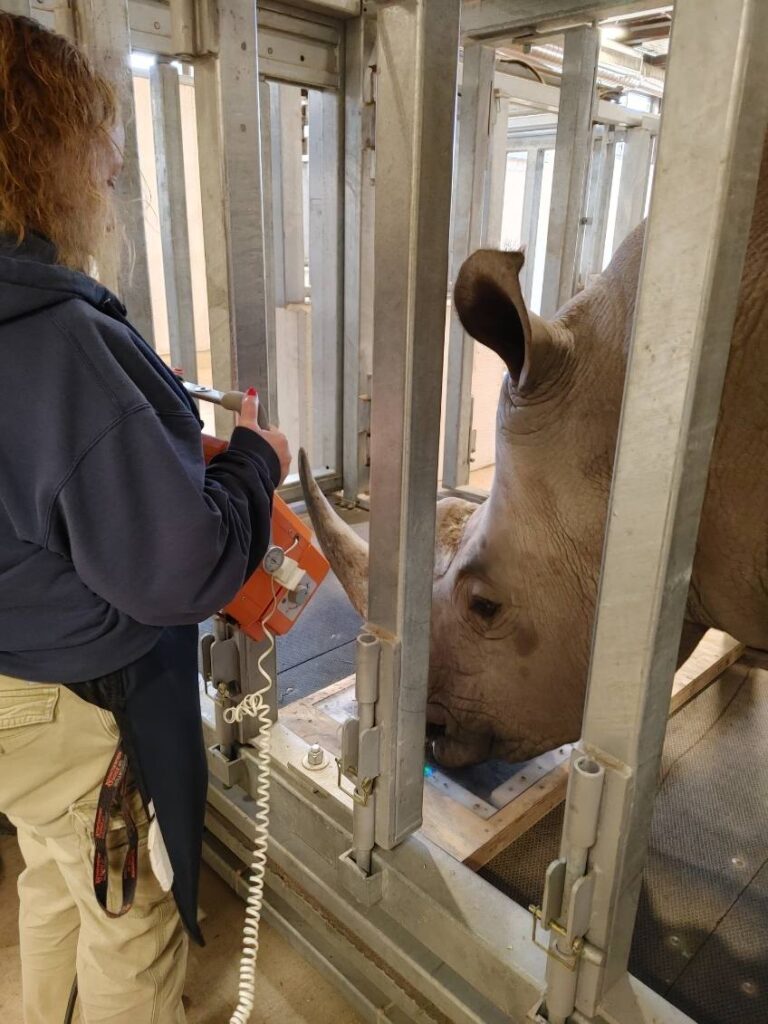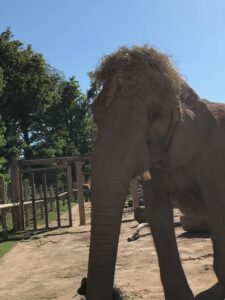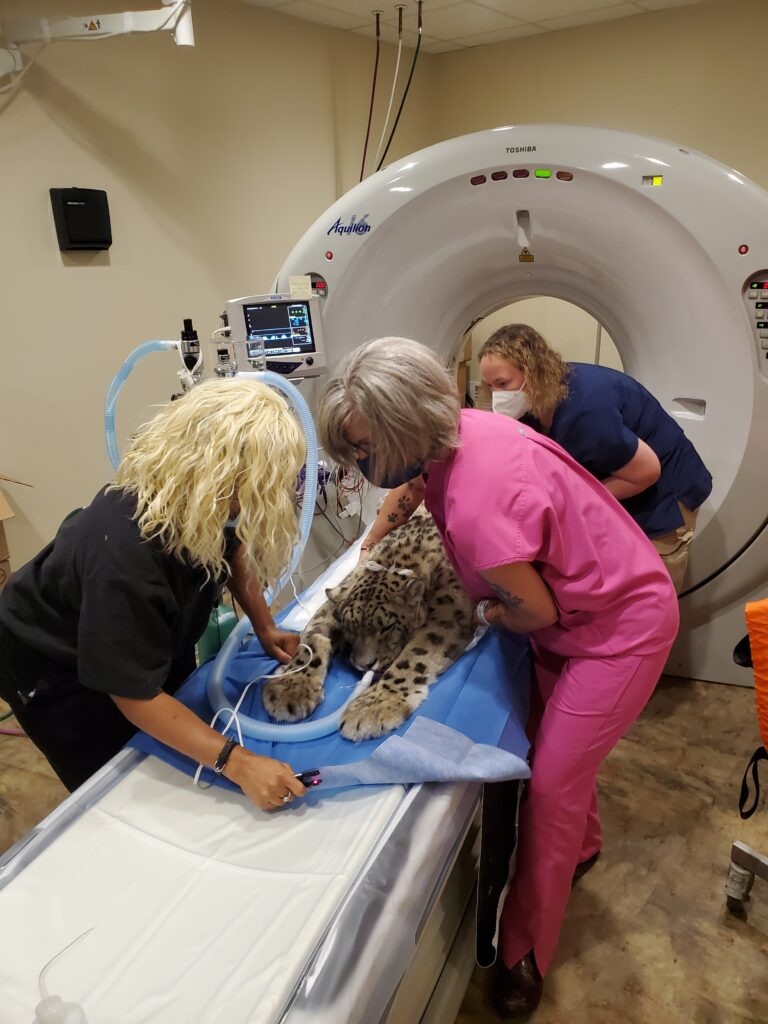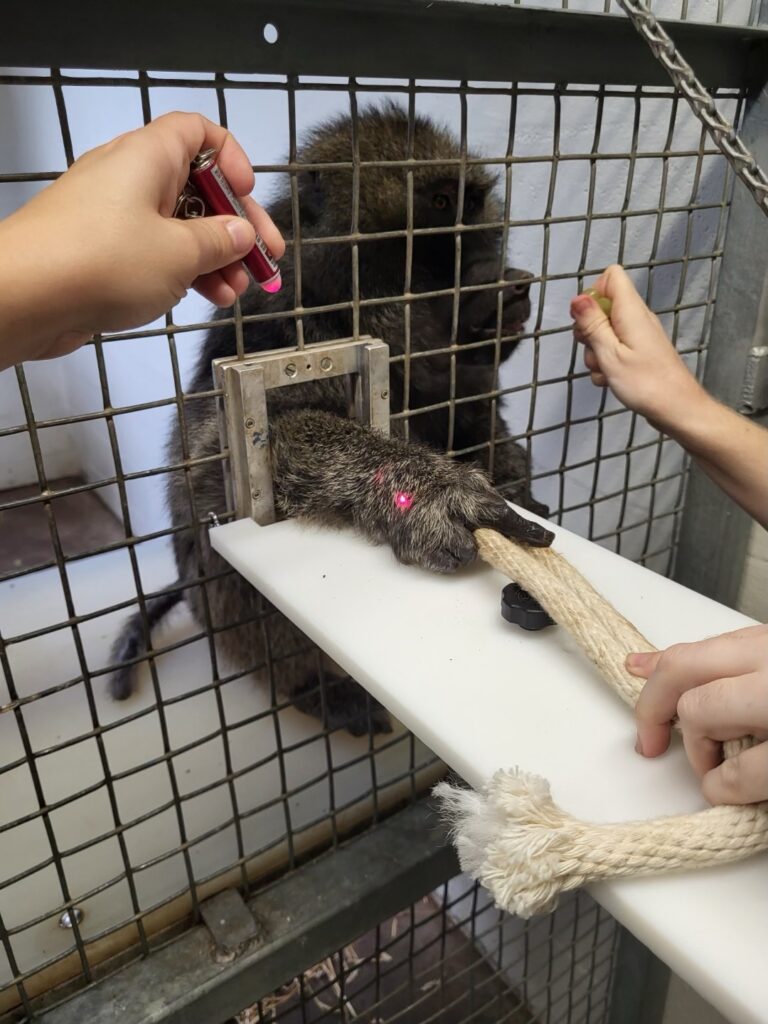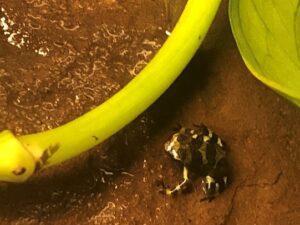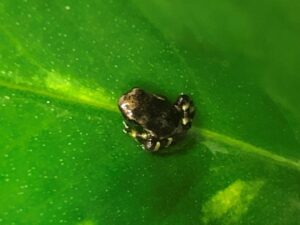by Zoo Keeper Sue Rea
Bob and Gunni, Kellee Wolowitz 📸
Gunni, short for Gunnison, arrived to Seneca Park Zoo last August. Gunni is staying with us while his home zoo, Denver Zoo, builds a new sea lion habitat. Gunni has acclimated well to his temporary home here and spends his days swimming with the other sea lions, Bob, Mary Lou, Lily and Daley. He usually spends his nights snuggled up inside with the others, usually right next to Mary Lou. Gunni currently weighs in at 292 pounds and enjoys participating in his training sessions.
Training Exercises with Gunni, 📸 Kellee Wolowitz
He eats about 18 pounds of fish a day! His diet of fish includes capelin, herring, mackerel and squid. He loves fish-filled ice blocks and playing with his feeder toys. Gunni is very smart and eager to please his trainers and his sweet temperament has won everyone over!







